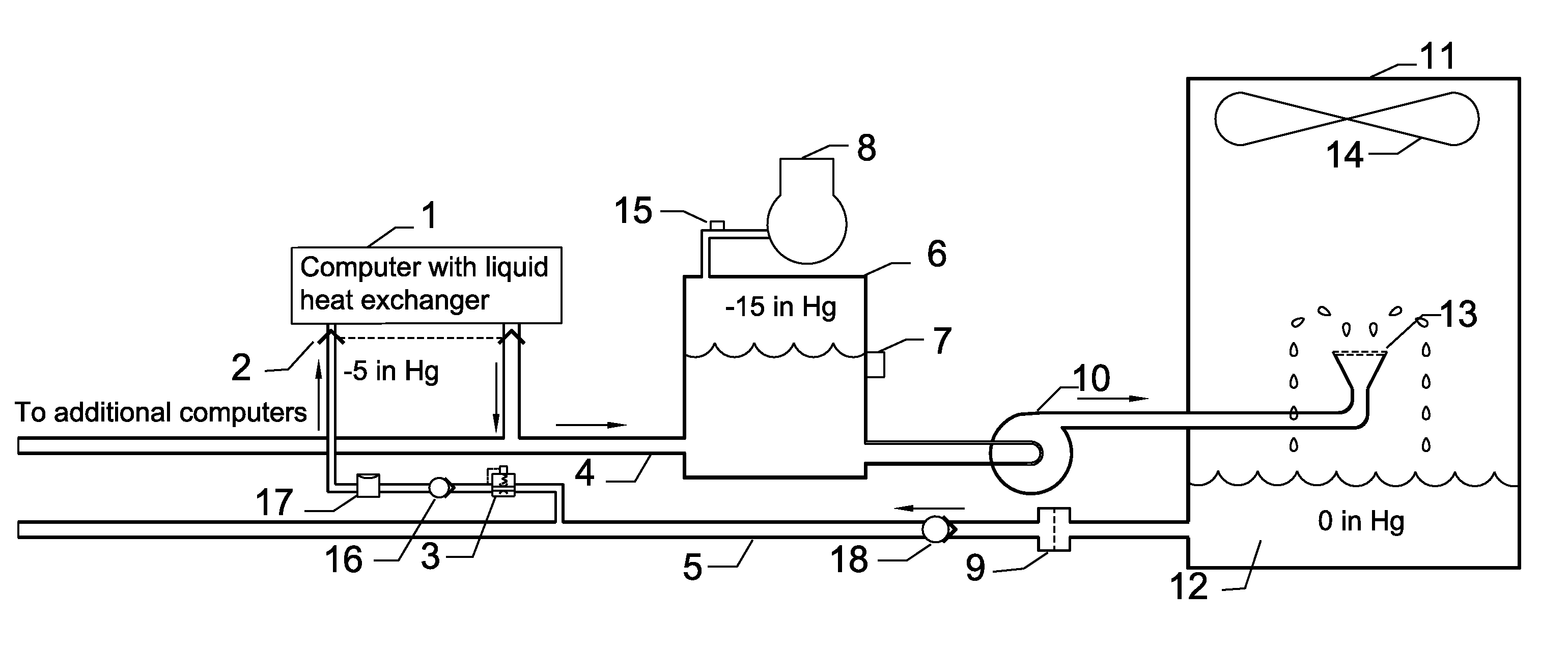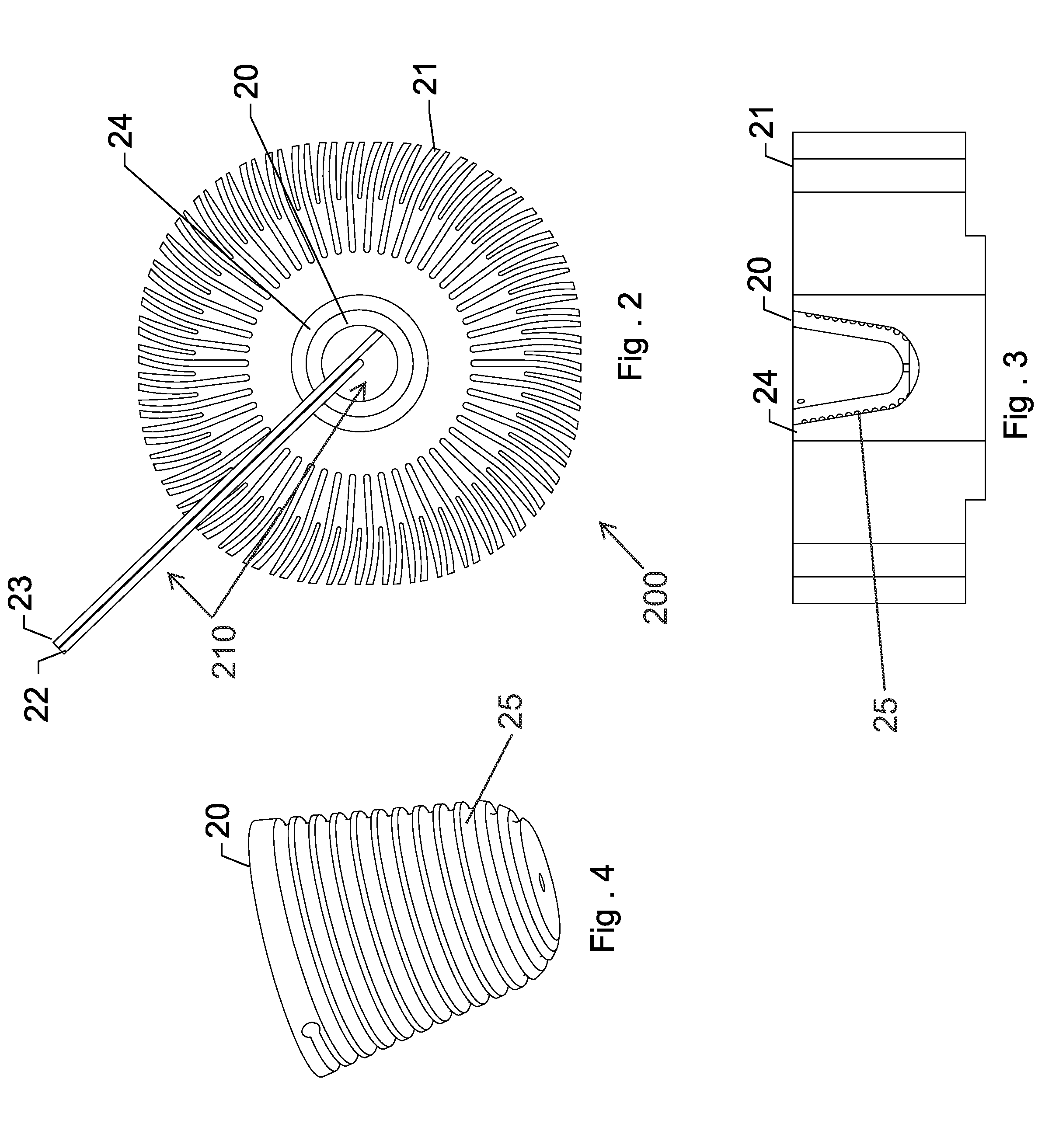Vacuum Pumped Liquid Cooling System for Computers
a liquid cooling system and vacuum pump technology, applied in indirect heat exchangers, lighting and heating apparatus, instruments, etc., can solve the problem of limiting the delta pressure available to each heat exchanger, and achieve the effect of reducing the volume of water, increasing the water flow and turbulence, and reducing the amount of water
- Summary
- Abstract
- Description
- Claims
- Application Information
AI Technical Summary
Benefits of technology
Problems solved by technology
Method used
Image
Examples
Embodiment Construction
[0028]The following detailed description presents a description of certain example embodiments of the present invention. In this description, reference is made to the drawings wherein like parts are designated with like numerals throughout.
[0029]Referring to the example embodiment shown in FIG. 1, a supply of liquid coolant such as water 12 is maintained at a low temperature by the evaporation of the water as it flows out of nozzle 13. The humid air flows out due to fan 14 in cooling tower 11. Due to the low pressure in the reservoir 6, the water flows through a filter 9, and check valve 18 and a supply pipe 5, through a pressure regulator 3, through another check valve with a cracking pressure of approximately 1 inch HG, through and vacuum accumulator 17 and then through a fluid connector 2, to the computer with internal heat exchanger 1. The water then receives heat from the internal electronic components in the computer and flows out through the connector to an extraction pipe 4 ...
PUM
 Login to View More
Login to View More Abstract
Description
Claims
Application Information
 Login to View More
Login to View More - R&D
- Intellectual Property
- Life Sciences
- Materials
- Tech Scout
- Unparalleled Data Quality
- Higher Quality Content
- 60% Fewer Hallucinations
Browse by: Latest US Patents, China's latest patents, Technical Efficacy Thesaurus, Application Domain, Technology Topic, Popular Technical Reports.
© 2025 PatSnap. All rights reserved.Legal|Privacy policy|Modern Slavery Act Transparency Statement|Sitemap|About US| Contact US: help@patsnap.com



